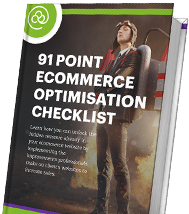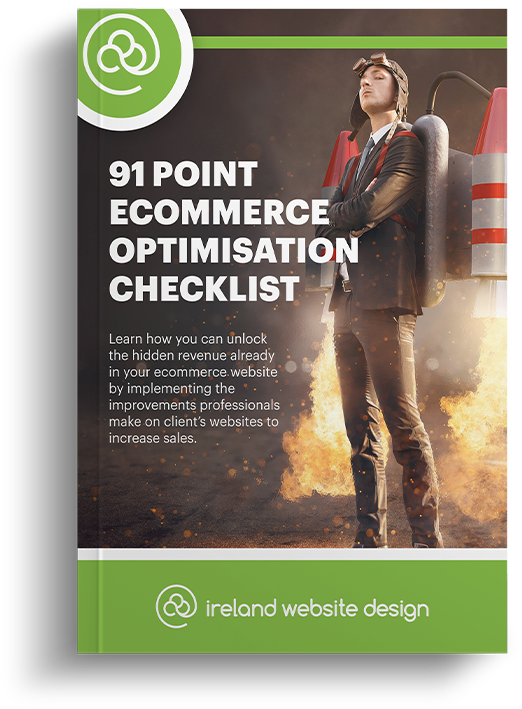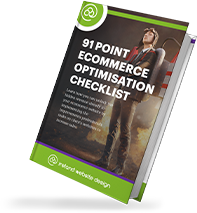So you’ve decided that you need to create a new website for your business or maybe you’re creating your first ever website?
No matter what your experience is with websites, you should know there are a lot of steps involved in creating a site that benefits your company.
You need to consider your audience’s needs first, feeding your site amazing content and making sure your website is attractive and friendly for your customers.
We know that planning a new website can be daunting, especially if it’s your first time, but there is no need to worry. To help you get prepared, we’ve compiled this list of 5 things you should consider when planning your new website.
1. Strategy
Creating a strong online strategy is incredibly important when you are beginning to build your new website for your business.
When you have a strategy laid out for you, you and your team will have an idea of what you want your website to achieve and what its purpose is. To get the full value out of your website it’s important that you know what success looks like for you.
Here are some questions to consider when thinking about your website strategy:
Who is your target audience?
If you take some time to figure out exactly who your audience is and what it is they want out of your product/service it will be easier for you to figure out how your website should look and work. Building some customer profiles will help you gain a better understanding of your target market and allow you to build your site with the user in mind.
What are your goals?
Before anything else, you should know why you’re creating your website in the first place. Having a website strategy is necessary but useless if it doesn’t clearly outline the goals and key objectives for the website. In order to develop a site that can provide your business with what it wants, you need to know what the website is for.
Is it for increasing product sales?
Is it outlining featured products?
Is it just an online business card?
When you take the time to ask yourself what it is you want from your site, you will be able to create a strategy that will get what you want.
Does it function on all devices?
Websites need to work on all devices, not just laptops. Most people use their phones to access websites now, along with tablets.
Mobile responsiveness isn’t optional. If your site isn’t responsive, it’ll get penalized by Google and mobile visitors will simply click away and onto someone else’s site.
2. The Customer Journey
After you’ve established what your goals are with your site you should begin to think about what should be included in your website.
What type of journey do you want your customers to be faced with when they come to your website?
First impressions are everything. With this in mind, you need to give your site’s visitors something that is inviting, welcoming and tells them everything they need to know in an instant.
3. Sitemaps & Wireframes
When planning out your website, keeping your user’s journey in mind, you should start figuring out how you want to map out your pages and what sort of content you want to include on each one.
You probably already have an idea of what you want to include on the pages, but it’s recommended to put pen to paper and begin drawing out a sitemap to give you a better idea of how your website layout will look. You can create mind maps, flow charts, or even minor sketches to show exactly how you want your developers to build your site.
Remember that you should start by figuring out what your top-level menu categories will be before mapping out the pages. This will make it a lot easier for you to manage. When you begin to map out your site you should always take into consideration any notes you’ve taken on what your user experience will be like. Make sure the information on each page is easy to find and clearly labeled.
4. Content
You should always sort out your content before you begin your website’s design. It’s a much more difficult process fitting content into a design than building a design around your content.
When planning a new website, you should definitely spend a good amount of time creating meaningful content. After planning out your website strategy and figuring out your target audience it shouldn’t be too difficult to discover what type of content draws the attention of your customers.
The content you create is on your site to attract more people to it, but it’s also in place to create a trusting relationship.
Content is important for several reasons but one of the most important reasons is it allows your website to rank on search engines like Google. If you have good content that is unique, interesting, and grabs the attention of your audience then this will help improve your SEO and in turn your search engine rankings.
5. Design
The design is a vital area of your website strategy, but it’s often seen as the most important area. It’s good to concentrate on the design to make it look nice and give off a good impression, but people often give the design too much thought and take concentration away from other aspects of the website.
People are drawn to simplistic-looking designs and ones that are visually appealing. You need to be able to choose a design that will make your user comfortable and want to remain on the site for longer.
You don’t have to do anything fancy or add complex menus to make your website stick out, sometimes these complicated websites are the ones that visitors tend to stay clear of.
If you’re still worried about building your new website or have any questions feel free to get in contact with us and we can see what we can do to help you out.




